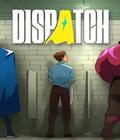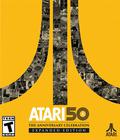Genre: Action/Platformer
Publisher: D3
Developer: Tomy
Release Date: March 7, 2006
 NOTICE: I am not a fan of Naruto as a series, although I have seen and enjoyed a few episodes. Any series where one of the major characters is often seen reading a manga titled "Make-Out Violence" has to have some worth, though.
NOTICE: I am not a fan of Naruto as a series, although I have seen and enjoyed a few episodes. Any series where one of the major characters is often seen reading a manga titled "Make-Out Violence" has to have some worth, though.
Naruto is finally hitting the 'States, and it is hitting it hard, with a blitz of media, dubbed releases of the anime, translated manga, and releases of several of the video games based on the series having all arrived in the same short period of time, alongside the already-stateside merchandise that some stores have offered. Regardless of one's opinion of the series, it has so far been a reasonable conclusion that the games have been sub-par at best, with Naruto: Clash of Ninja being a mere sub-par fighter. Further putting Ninja Council into the "this isn't going to be good" category is its existance as a Game Boy Advance game, a console plagued with cheap cash-in titles. Surprisingly, however, Naruto: Ninja Council proves itself a surprisingly capable game, solidly capturing the feel of the series while being a reasonable platformer in its own right.
At its core, Ninja Council is a single-player brawler platformer – run around the two-dimensional stages, smack up the enemies with your fists, thrown weapons, or one of six jutsus per character, and beat each of the other characters who gets in your way as bosses at the end of each level. Each character is a reasonable representation of their anime versions, and the game's very light storyline reasonably explains their appearances, as well as Naruto's motivation for running through the levels in the first place. The plot, however, does not explain the title.
Gameplay itself should be familiar to anyone who has played any generic example of this genre. A jumps, B is an "attack" button when going into a combo, and the R button throws whatever ranged weapon you have equipped, although no reason for having anything besides the Kunai is ever provided, as it is the strongest of the three and can counter enemy projectiles. Hold R to use an elemental scroll, if you've found any, and B to "charge up" a jutsu; the more you charge, the higher level jutsu you get. Each of the three – four, if you find a secret – jutsu available to each character comes in a "red" (failed) and "yellow" (successful) variant. The red ones are easy to avoid, but take the time to do each of them at least once, for a laugh. There are a few other actions, all of which are intuitive and simple, and scrolls provide hints from Kakashi in case you can't figure them out. However, a few of the tips for the bosses are useless or exactly the wrong thing to do. The controls are simple enough to allow the game to move at a fast pace, with no slowdown whatsoever, and there is a little bit of room for strategy, mostly when to start charging your jutsus. Once you're glowing, you're invincible, but that leaves you wide open for a good second, just enough that you have to think about when to do it, especially in this game's lack of patterns.
Ninja Council has three significant problems. The first one is the fact that it uses the old standby of voice clips in addition to sound effects. The problem with this is that even the younger players at whom this game is targeted will probably find the small array of clips annoying after a while. The game's stage designs are short and generally not very interesting (with the occasional secret to spice things up), though they are reasonably fun to travel through, in the sense that you're a ninja and can tear things up. Most damning, however, are the boss battles, where the AI seems to be entirely random, and which can be incredibly cheap at times, often taking out an entire lifebar (out of the three you get per life) in one hit … and then immediately going into a combo to remove another one. The later bosses are particularly bad about this, basically ending up being affairs of the most annoying kind, in which you must get out your strongest jutsu four times, and not take any damage before then.
Graphically, the game does not do anything special, using well-drawn sprites and basic Mode-7 backgrounds to keep the stages simple and clean-looking. There is not one jagged artifact or other obvious sign of laziness in the level to be seen. The graphics definitely won't be mistaken for the show and don't push the Game Boy Advance's limits at all, but are smooth, slowdown-free, and convey the feel of the show very well. In other words, they're about average for a moderately well-done licensed game. The sound effects, besides the aforementioned annoying voice clips, consist of serviceable standard sound effects for punches and jumps. Thankfully, there is no "patter" as you move around; at the rate that you'll be running around the stages, that would get annoying fast. Unfortunately, highly sub-par bips-and-bleeps music rapidly degenerates into being highly grating and has none of the show's quality, which, from what I've seen in the subbed versions, does not have the best music in the first place.
Most GBA games of any stripe don't have that much by way of unlockable or bonus content, but Ninja Council offers dedicated players a nice array of bonus options if they like the game enough to persist through it, from a sound test for finding a hundred Leaf Village symbols, to being able to play as Kakashi if you beat the game with Naruto and Sasuke. This game takes place early enough in the series that Kakashi can kick a lot of butt very easily. Think Dante in Viewtiful Joe easily. There are also a few secrets specifically intended for fans of the anime who remember specific weaknesses of certain characters in the anime. (Hint: use Harem no Jutsu on the first boss.)
Honestly, for a licensed game, Naruto: Ninja Council is surprisingly fun and playable and certainly will give fans of the series – of any age – a decent fix that's more fun than Clash of Ninjas for the larger consoles. It manages to fit some of the series' feel into one of the most generic genres ever. Unfortunately, severe play issues limit its playability, and very few gamers of any age will get to enjoy some of the extras that Tomy took the time to add in. Fans of the series will eat it up, and others might want to give it a try if they have a copy handy just to appreciate a reasonably decent licensed game and a quick fix of platforming action.
No, I will not conclude this review with "Believe it." Believe it - damnit.
Score: 6.3/10















